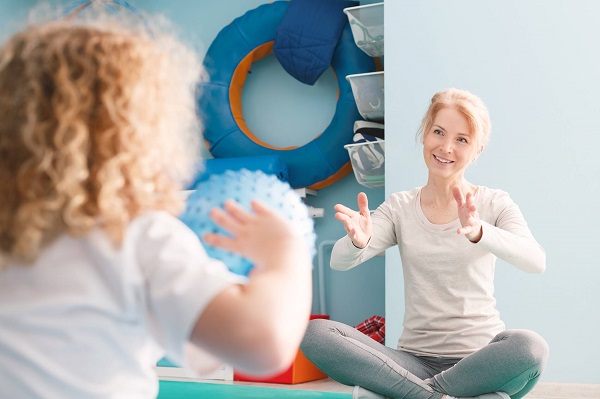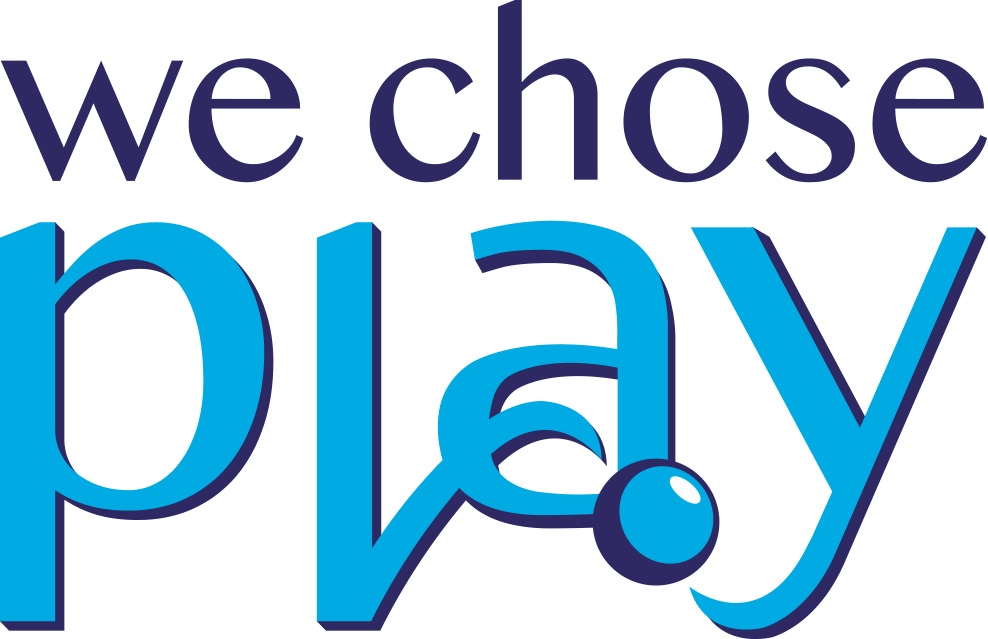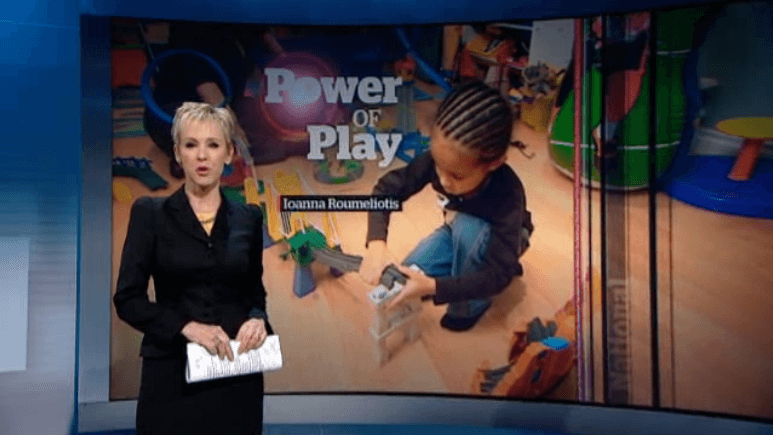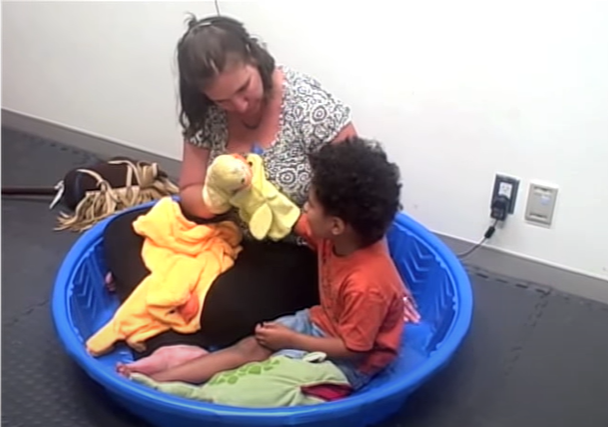Why DIR/Floortime?
DIR/Floortime just makes sense. I wanted our fussy child to be happy. I watched numerous therapists who knew nothing about the Developmental, Individual differences, Relationship-based (DIR) model try to make our son do things he was not comfortable doing and I didn’t appreciate being told that I needed to watch my child suffer in order to help him.
DIR/Floortime was fun! I first heard about it watching the evening news. This video shows the results of a study done at York University in Toronto which found that autistic children receiving DIR/Floortime for one year went from being extremely socially anxious to having less distress socially and from not enjoying social interactions to enjoying social interactions more because the parents learned how to connect and relate with their children.
Neuroscientist Jim Stieben explains the “two-three fold activity changes” in the brain because respecting where the child is Developmentally and taking into account their Individual differences within a respectful, caring Relationship turns off their defensiveness from us trying to change them, and instead allows them to be who they are, allowing us to support their development. Do watch the video!
I couldn’t believe it! Ground-breaking research done in my own city had found neuroscience evidence that DIR/Floortime teaches parents to support an autistic child’s well-being. As the reporter says, “creating that emotional connection with the child” rather than “teach them how to behave“. It’s about changing how we interact with the child that helps them develop and thrive!
We chose play over ABA
I was sick of filling out numerous forms and applications to be put on a 1-to-2-year wait list for services that could maybe help our son, but only if he qualified by showing improvement after six weeks of the intervention, and in the meantime going to useless sessions with hand-outs about activities we could do with our son that we may or may not have implemented properly.
I was sick of guessing what else might help our child if only I spent hundreds or thousands of dollars. I was sick of sifting through contradictory claims of interventions that must be done in order for our son to ‘improve’—as if he wasn’t worthy if he didn’t—interventions that claimed to ‘work’ for various invented reasons that sounded convincing, yet had no valid or agreed upon scientific evidence.
I was sick of seeing our public tax dollars spent on bureaucracy and salaries of wonderful professionals who provided this general information rather than on direct coaching and a program for our family who needed support and help now. I was sick of being told that the goal for our son’s therapies was for him to be classroom-ready. Really?
And I was sick of questioning myself for what I might have done to have caused our son to struggle and need support in the first place, whether it be by vaccinating him, by feeding him the wrong foods, or by living in an area with too much pollution. Every other kid around us with the same conditions didn’t struggle like my son, so that just felt downright unfair and cruel.
DIR/Floortime was a breath of fresh air. We just watched what our son was interested in then joined him in his play—no matter what that looked like. At the time it was following our wandering son around the room, presenting him with various toys and items until he explored one. The toy might have even been one or both of us. Once our son was regulated and attentive with an activity, even for a second, we could get his engagement by joining him in his activity and we might even get a back-and-forth interaction going of gestures, glances, body language, sounds or words.
With coaching from DIR/Floortime certified practitioners we learned how to harness our child’s interests to support his development by challenging him with the slightest bit of variation in what he would already have mastered. By playfully challenging him a little bit when he was engaged and happy, we could help him figure out something new.
The more I learned about the DIR model, the more convinced I became. The DIR model took the latest research that all learning is based on affect, and took a bottom-up approach by looking at the child from birth forward.
Children and adults of all ages can benefit from this approach, but the DIR model also shows us how to notice differences in development much earlier in order to learn how to support our child before they are repeatedly misunderstood and lacking our appropriate support and guidance, leading to enormous frustration for the child.
This allows parents to support their child’s developmental progress, as opposed to trying to correct disruptive behaviours after they have become the child’s reality due to a lack of support and/or understanding.

Dr. Greenspan figured out more than two decades ago that you can catch the underlying differences as early as in infancy using his validated assessment, the Greenspan Social Emotional Growth Chart, to determine if a child is showing signs of developmental differences, at which point you can determine how best to interact with your child by respecting their unique profile. We’d love to see more paediatricians everywhere using this tool much earlier than the standard 18-month check-up to identify how to support young children developmentally.
You can access Dr. Greenspan’s Functional Emotional Assessment Scales to see if your child shows signs of developmental differences at this link in order to learn how to support them and accommodate their sensory processing differences so their brain can thrive in enjoyable interactions rather than avoiding them.
Dr. Greenspan also recorded weekly radio shows which you can now access that provide a rich source of information about this approach for parents and others interested. Please tune in! There’s no better way to learn than from the direct source himself, Dr. Greenspan.
Dr. Greenspan called for us to continue to be a part of moving this developmental approach to the masses. It is not just for children with disabilities but for supporting everyone’s development.
If your instincts have lead you to DIR/Floortime because you are on the fence about ABA, you might be interested in Dr. Gil Tippy’s series of presentations entitled ‘ABA Detox’, which is shown below. While many families have found ABA to be the answer for them, other families want another option. Parents should have a choice in what programs their child receives. Every child responds differently to different options.
You can sign up for updates to follow my blog posts where I’ll share many examples of how to apply the DIR model and do Floortime with your own child.
I will be providing new content regularly and will welcome your participation in the free weekly online Parent Support Drop In.
Consider becoming a Member for access to many videos and other heplful content!
You can enjoy the connection you have with your child using the DIR/Floortime approach!

Sign up for our updates
Sign up for our updates by clicking here and receive a free, digital copy of our publication: “10 Things You Can Do Now to support your child“. You can be assured that we will not share your information.



